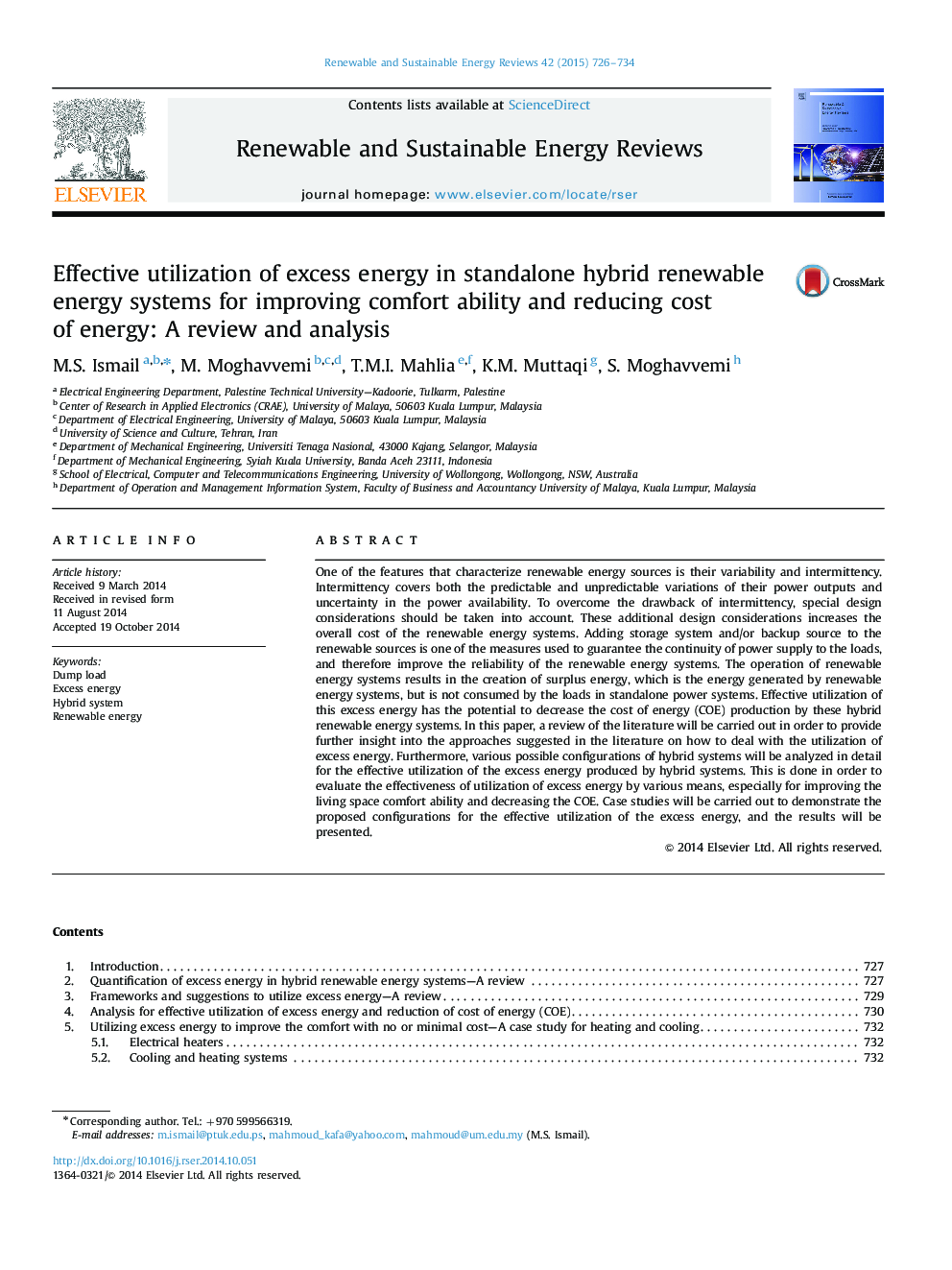| Article ID | Journal | Published Year | Pages | File Type |
|---|---|---|---|---|
| 8117965 | Renewable and Sustainable Energy Reviews | 2015 | 9 Pages |
Abstract
One of the features that characterize renewable energy sources is their variability and intermittency. Intermittency covers both the predictable and unpredictable variations of their power outputs and uncertainty in the power availability. To overcome the drawback of intermittency, special design considerations should be taken into account. These additional design considerations increases the overall cost of the renewable energy systems. Adding storage system and/or backup source to the renewable sources is one of the measures used to guarantee the continuity of power supply to the loads, and therefore improve the reliability of the renewable energy systems. The operation of renewable energy systems results in the creation of surplus energy, which is the energy generated by renewable energy systems, but is not consumed by the loads in standalone power systems. Effective utilization of this excess energy has the potential to decrease the cost of energy (COE) production by these hybrid renewable energy systems. In this paper, a review of the literature will be carried out in order to provide further insight into the approaches suggested in the literature on how to deal with the utilization of excess energy. Furthermore, various possible configurations of hybrid systems will be analyzed in detail for the effective utilization of the excess energy produced by hybrid systems. This is done in order to evaluate the effectiveness of utilization of excess energy by various means, especially for improving the living space comfort ability and decreasing the COE. Case studies will be carried out to demonstrate the proposed configurations for the effective utilization of the excess energy, and the results will be presented.
Related Topics
Physical Sciences and Engineering
Energy
Renewable Energy, Sustainability and the Environment
Authors
M.S. Ismail, M. Moghavvemi, T.M.I. Mahlia, K.M. Muttaqi, S. Moghavvemi,
